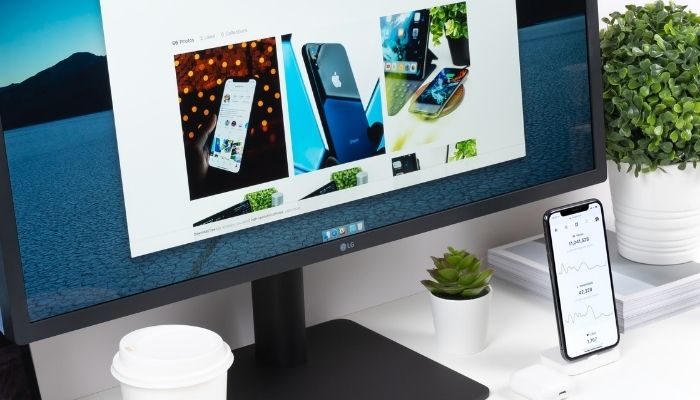Maintaining your computer and other electronic devices during a long-distance transfer is critical in today’s digital world. Not only are they costly to replace, but they can store anything from family photographs and videos to financial details and legal paperwork.
It is important to properly care for your electronics throughout your move to ensure that the equipment remains safe and that you can access your priceless memories and personal information in your new home.
The best computer monitors are fragile and delicate pieces of technology, which might cause problems during removals or when you must ship displays across the country. To assist you in simplifying the process, we’ve compiled a list of valuable suggestions for Packing Your Monitor Safely.
A few household goods will demand extra attention, not just throughout the moving process but also during the packing process.
Among these is your computer monitor. Because it is costly and delicate, you will want to ensure that you use the proper packing strategy to ensure its preservation.
Things to Consider for Packing a Computer Monitor
#1) Retain the Original Box
The simplest way to locate an appropriate box to ship your computer monitor is to retain the original box and associated packing components. It may incorporate huge pieces of polystyrene that assist in stabilizing the monitor during shipment.
However, we recommend packaging the boxed-up display in a little larger box to assure its absolute protection throughout transit. Numerous shipping businesses can locate a box that is ideal for this purpose.
#2) Locate an Appropriate Box
If your monitor’s original packing is not available, you will need to purchase or locate the appropriate size. Generally, choose a box that is somewhat larger than the monitor to accommodate a variety of safety-enhancing packing products.
You can also design your box using cardboard corners, but be careful to use shrink wrap or tape to ensure the box fits securely around the display.
#3) Collect Packing Supplies
As you prepare the box for shipment, you’ll want to include various safety-enhancing packing items. Bubble wrap, Styrofoam, and packing peanuts are all examples of this. Utilize these packing items to ensure no space remains in the package.
It minimizes the possibility of the monitor slipping during transit. Space is the adversary of conscientious transportation. Utilize these packing items to ensure that no space remains in the package. It minimizes the possibility of the monitor slipping during transit.
#4) Pack and Secure the Monitor
Insert the monitor inside the box, ensuring that it fits firmly and has little to no wiggle room. Never lay the display face down since this may result in damage. Additionally, always move the monitor when upright, so properly label the box for shipment personnel.
What to Pack When Transporting Computer Peripherals?
Additionally, your monitor will include a keyboard, a mouse, and a variety of peripheral devices such as speakers, as well as a wireless router. Pack your monitor peripheral devices using the three principles below.
- When possible, use the peripheral devices’ original packaging to ensure maximum protection during the journey.
- Wrap your computer peripherals with packing paper and bubble wrap.
- Avoid applying excessive pressure or twisting them; otherwise, you risk breaking the cord.
- Always use labels or some other form of identification to keep track of which cable should go where and to which device.
- If you own a scanner, printer, or any other large peripheral device, use the same packing procedures as the computer mid-tower.
How to Properly Pack a Monitor for Transfer?

Follow the steps below:
- Before shutting down your computer, eject any CDs from the disc drive.
- Once you’ve gathered the necessary packing materials and backed up any vital data on your computer, it’s important to read these simple steps for packing your computer for a move.
- Turn off your PC and unplug the Switch cable from the wall outlet.
- Remove all cords that connect to or originate from the computer tower and monitor one by one.
- However, before disconnecting a cord, label it with a piece of paper and some tape, or even better, photograph the way all the cables are connected on the back of your monitor before detaching them.
- All cables should be folded in half, secured with cable ties or rubber bands, and arranged in a medium-sized box. Its straightforward process can help you save valuable time when it comes time to set up the desktop computer at your new house.
- When packaging a large screen monitor, feel free to box individual components individually if necessary, but keep as many as possible together to avoid overall chaos while unpacking.
- The monitor should then be wrapped in bubble wrap or other packaging materials – largely to prevent it from severe damage.
- Then, wrap the monitor as tightly as possible in the protective wrapping.
- Then, please place it in the box, filling any free space around the monitor with paper or bubble wrap to ensure it does not move when lifted.
- When you move into your new area, you’ll want to set up your computer workstation immediately.
- Therefore, ensure that the outside of the box is properly labelled so that you can readily locate the monitor.
- Additionally, prominently identify the outside of the box with ‘fragile’ in large, strong characters in multiple locations on the box. It ensures that whoever moves the box is extra cautious when lifting or placing it down.
How to Pack a Monitor Tower?
- Do not attempt to open the computer’s mid-tower to remove any of the monitor components contained within.
- Wrap the entire mid-tower in bubble wrap, either one large sheet or two or three smaller sheets taped together. Bubble wrap will prevent any shocks, vibrations, or even minor hits during transit in this manner.
- Then, using packing tape, cover the bubble-wrapped monitor tower in a large (furniture) blanket.
- Finally, place the secured Computer tower into an appropriate-sized cardboard box and fill any remaining space with folded bits of paper or old clothing.
- Securely close the box and mark its monitor, fragile.
Computers for Gaming and Custom-built Monitors That Can Transport
Gaming monitors and other custom-built Desktops require substantially the same maintenance as standard computers, with one critical exception: the graphics card must be secured. Graphics cards on gaming computers are large and susceptible to damage during transport.
The most secure method of transporting a gaming PC is to detach and pack the graphics card separately. If this is not possible, you will need to open the computer casing and insert packing material to support the graphics card.
To achieve the greatest results, consider choosing an expanding product such as Instapak Quick that fills in empty places in your computer case. If your computer is water-cooled, make sure to drain any fluids before packing it, as these can leak during packing and transfer.
Frequently Asked Question
How Do I Pack My Monitor for Shipping?
It paddles the box’s bottom surface with bubble wrap or packing paper. Wrap bubble wrap around the entire screen, pressing a piece of cardboard against the front. You can design your box using cardboard corners. Make sure it fits snugly around the display using shrink wrap or adhesive.
Is Shipping a Computer Safe?
Like most other objects, you can ship a computer safely and effectively. To begin, you’ll want to carefully pack the computer to save its priceless interior and external components.
How Do You Carry a Curved Monitor?
You might attempt to manufacture your styrofoam cuts or gently tweak the ones from another monitor if the one you’re using doesn’t fit. You can probably purchase a few polystyrene blocks at a local hardware store or building supply store. After that, you can use a knife to cut out the display’s shape. Additionally, you could wrap it in bubble wrap.
How Do I Ship My Computer and Monitor?
Wrap all individual components of the monitor, keyboard, and CPU completely in bubble wrap approximately 3 inches thick. Apply a strong cover with packing tape to ensure that the bubble wrap remains intact. Fill the base of your shipping box with a thick layer of packing material or bubble wrap.
Conclusion
It would help if you thought about what to pack and mail before packing your monitors, as well as other factors, including the amount of space available in the original boxes, the condition of the boxes, and the cost of purchasing new packages. Now you know how to transport your monitor safely.

